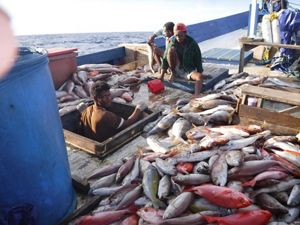Forests are a source of life for living things. Forests have been a source of food, water, and protection for centuries. If the forest area becomes an area designated as a production forest, how can the biodiversity there be maintained? Sustainable forest management is one of the breakthroughs.
Baca juga: Melestarikan Bentang Laut Kepala Burung melalui Monitoring Terumbu Karang
Yayasan Konservasi Alam Nusantara (YKAN) supports sustainable production forest management through forestry concessions and forest area governance by developing Sustainable Production Forest Management Tools (PHPL Tools) covering production, social, environmental, and conflict resolution aspects. YKAN collaborates with private companies, communities, and research institutions in Indonesia, to achieve its conservation goals.
One of the concrete steps is to monitor wildlife in the YKAN’s partner’s concession area (PT WBPU), to be the baseline data in measuring the management of this area. This monitoring uses camera traps and bioacoustics tools. Camera traps can monitor the presence of animals through motion sensors and heat sensors. The resulting data provide information on the composition, species trends, distribution, and diversity. This data will be used to assess the condition of the ecosystem in the area. Meanwhile, this bioacoustics tool can identify animals through sound waves. Generally, this tool identifies the presence of primates and birds.
In September 2024, in collaboration with the National Research and Innovation Agency (BRIN), YKAN, with partners including the community, started the monitoring activities. The results showed that many species of wildlife in the PT. WBPU concession areas are still found. Some included protected animals such as orangutans, bears, deer, and muntjacs. This shows the present habitat still supports the life of the wildlife in the area. In the future, YKAN and partners will continue monitoring to see if this wildlife still survives in the production area and, at the same time assess the sustainable forest management activity itself.





